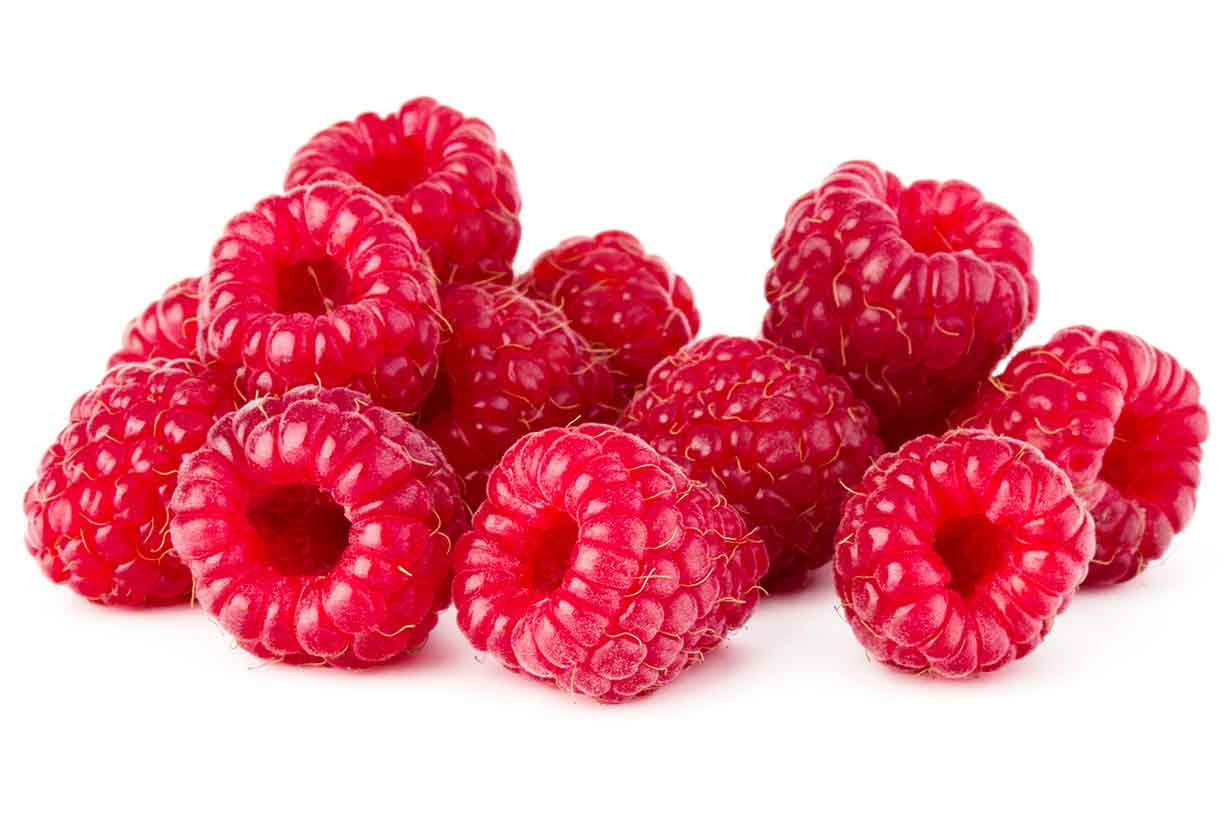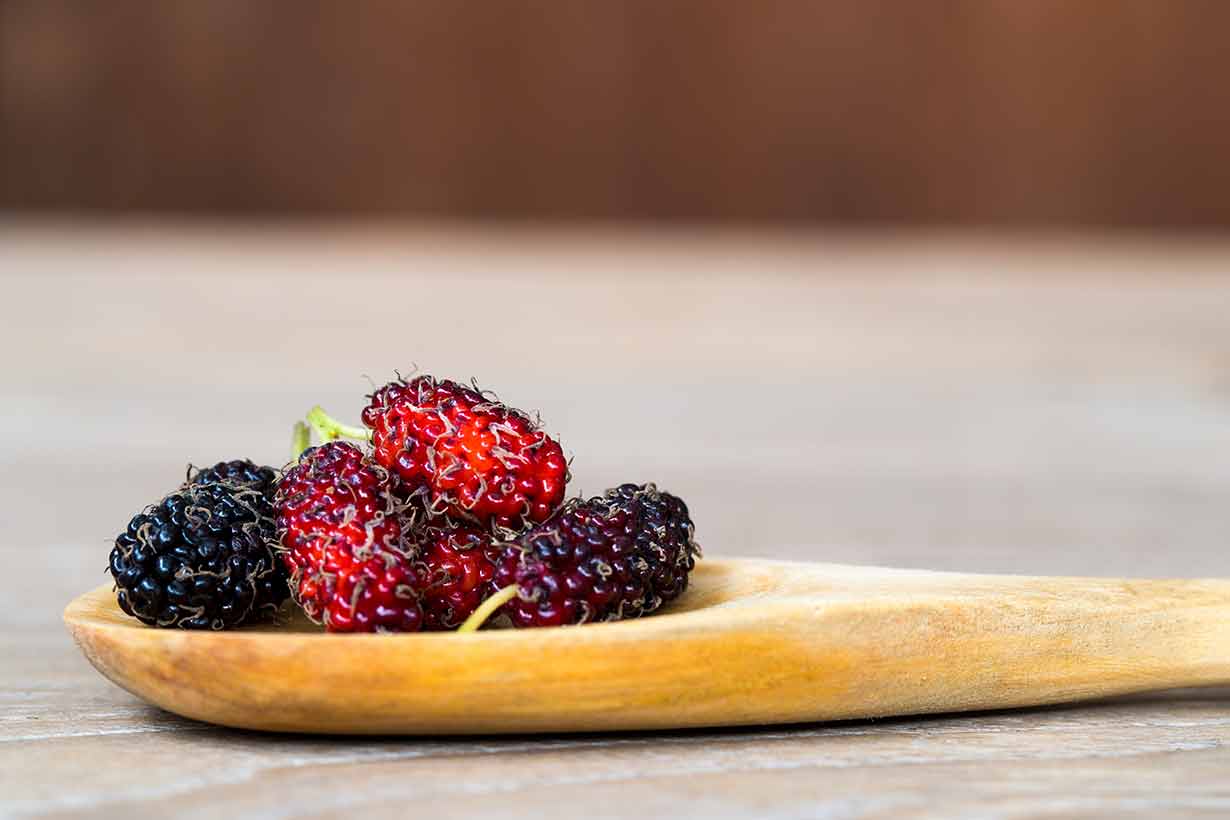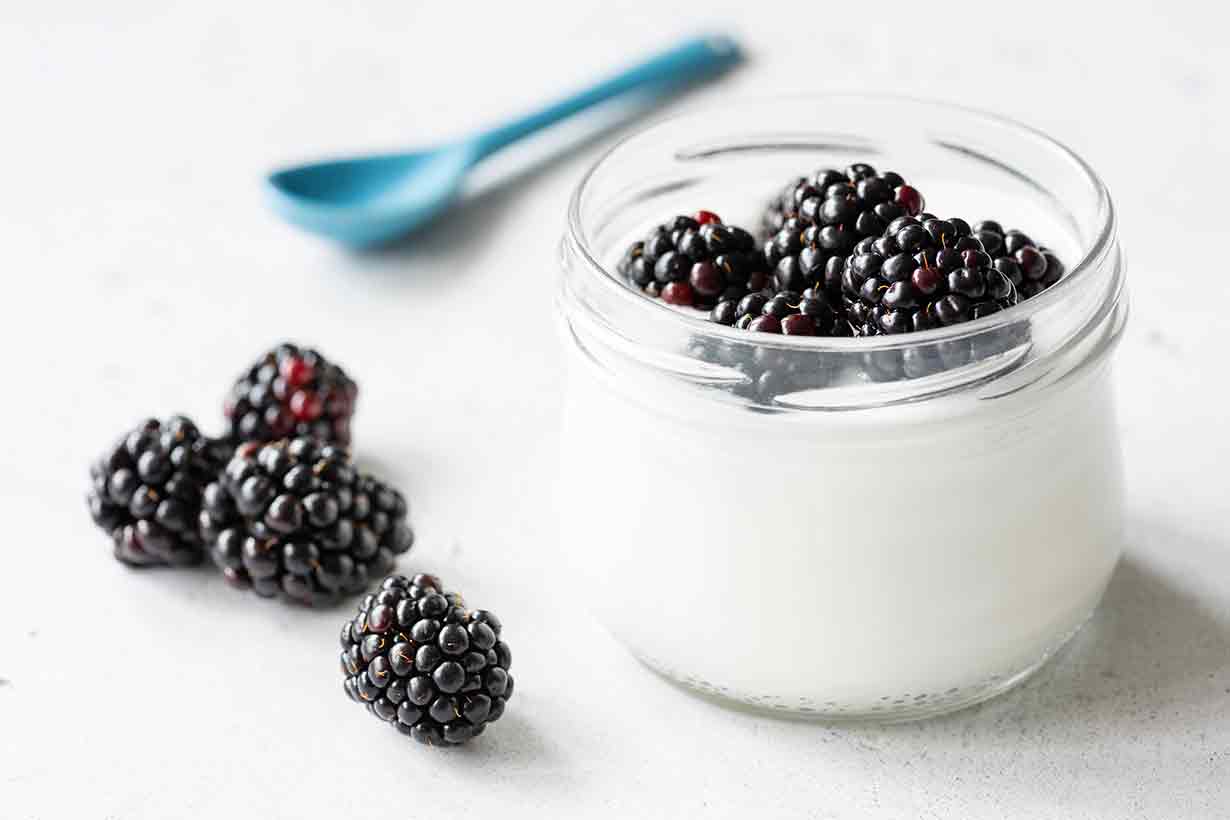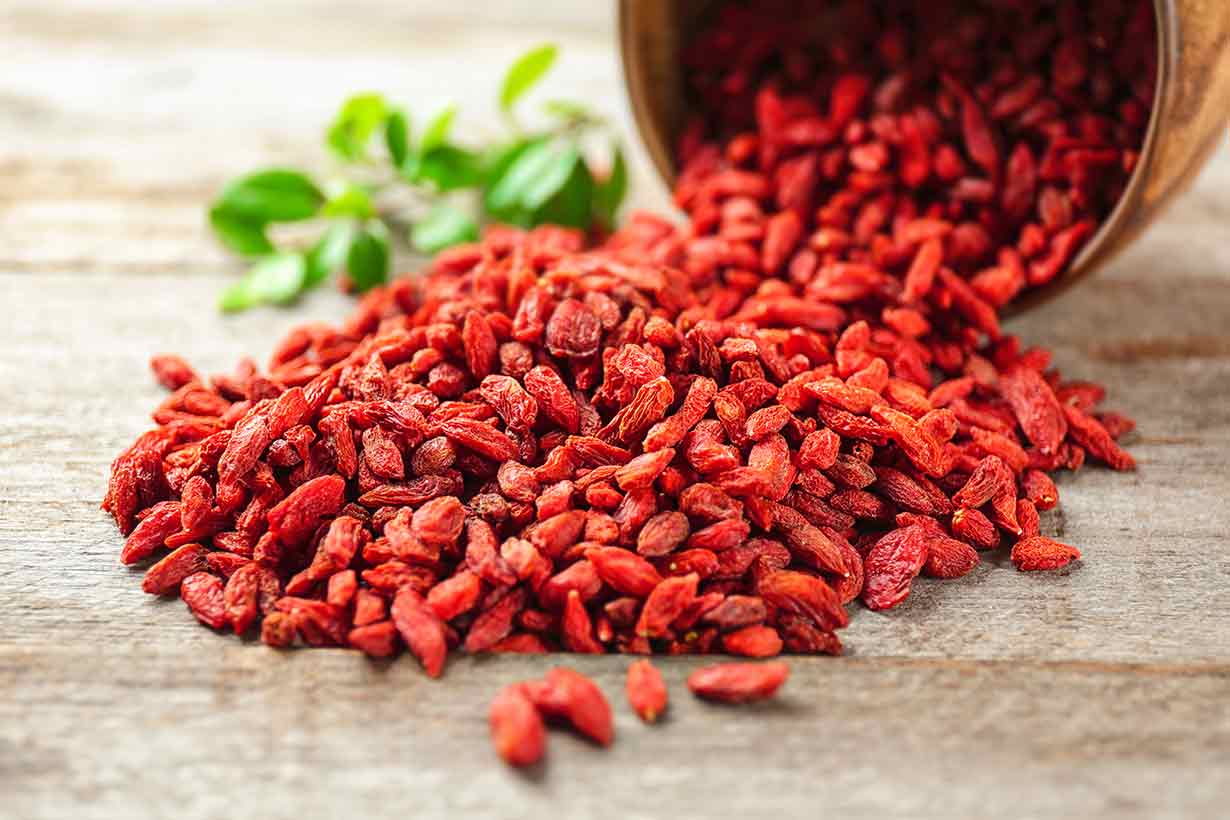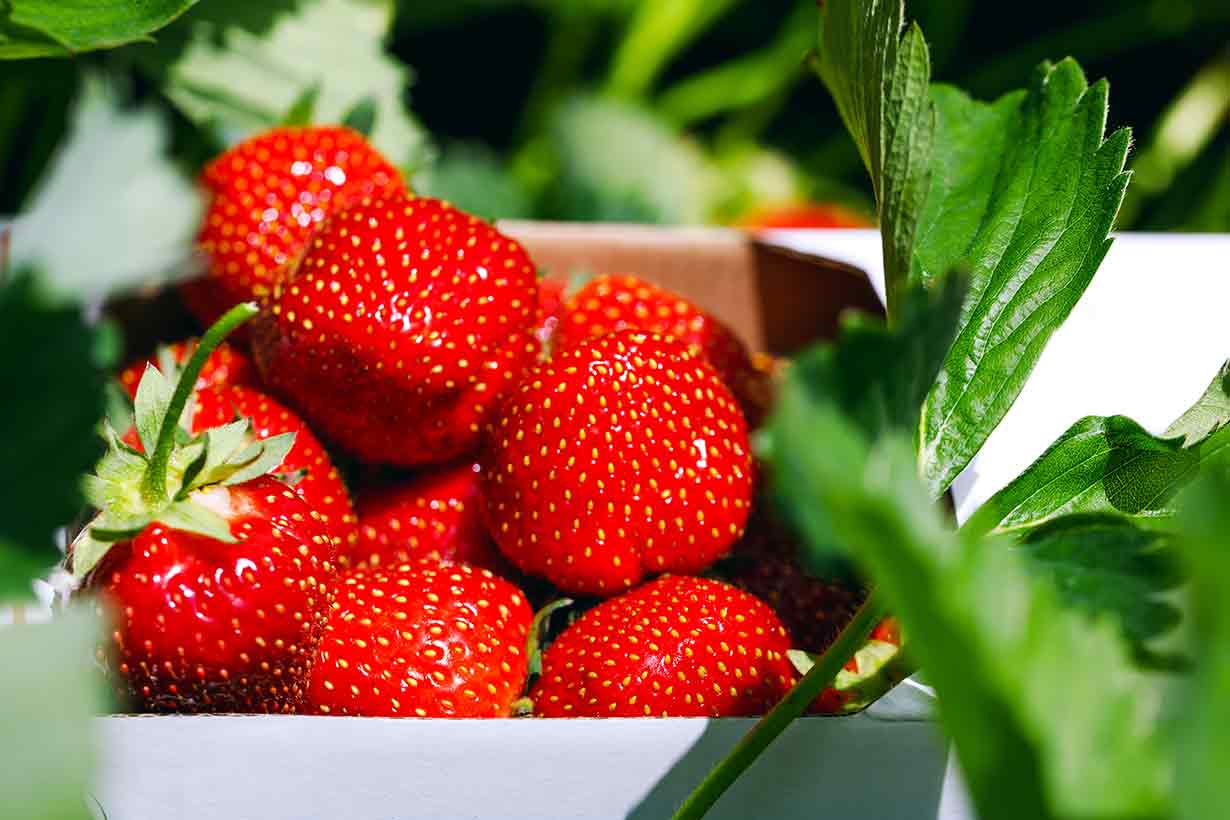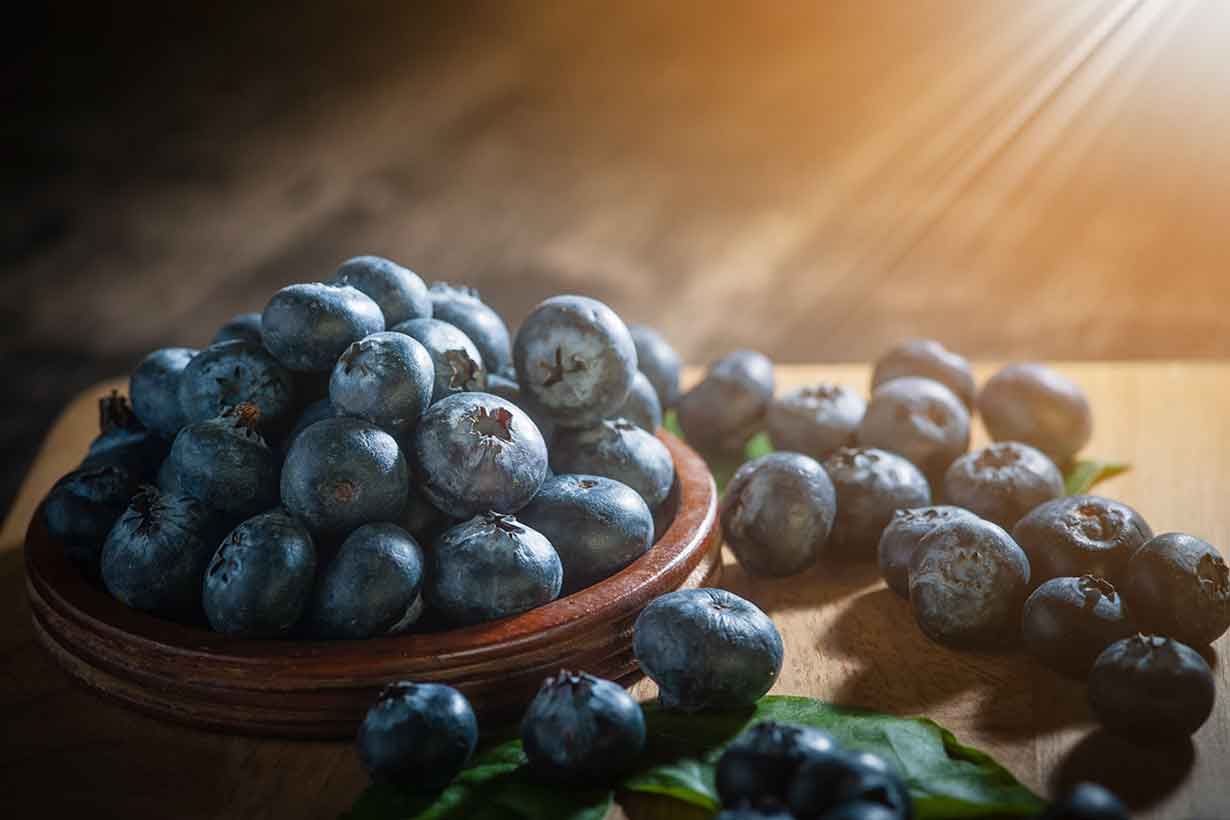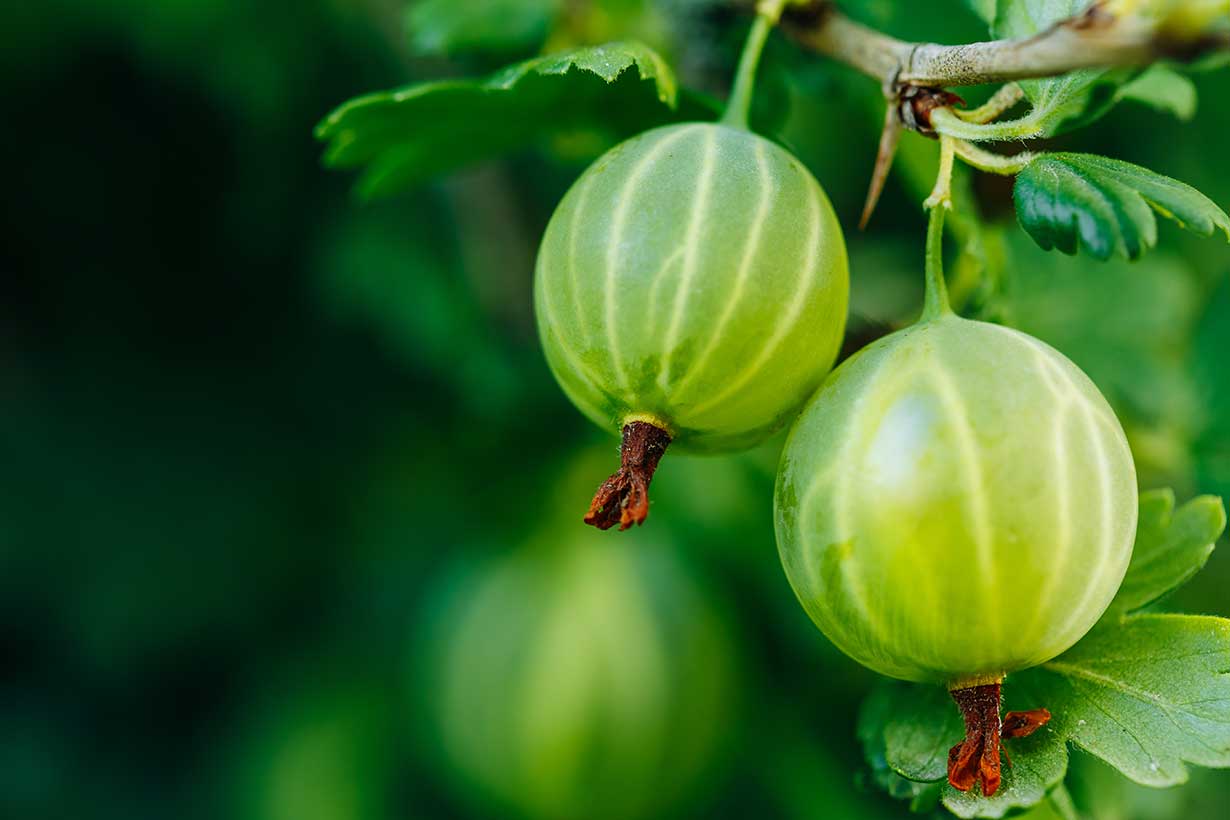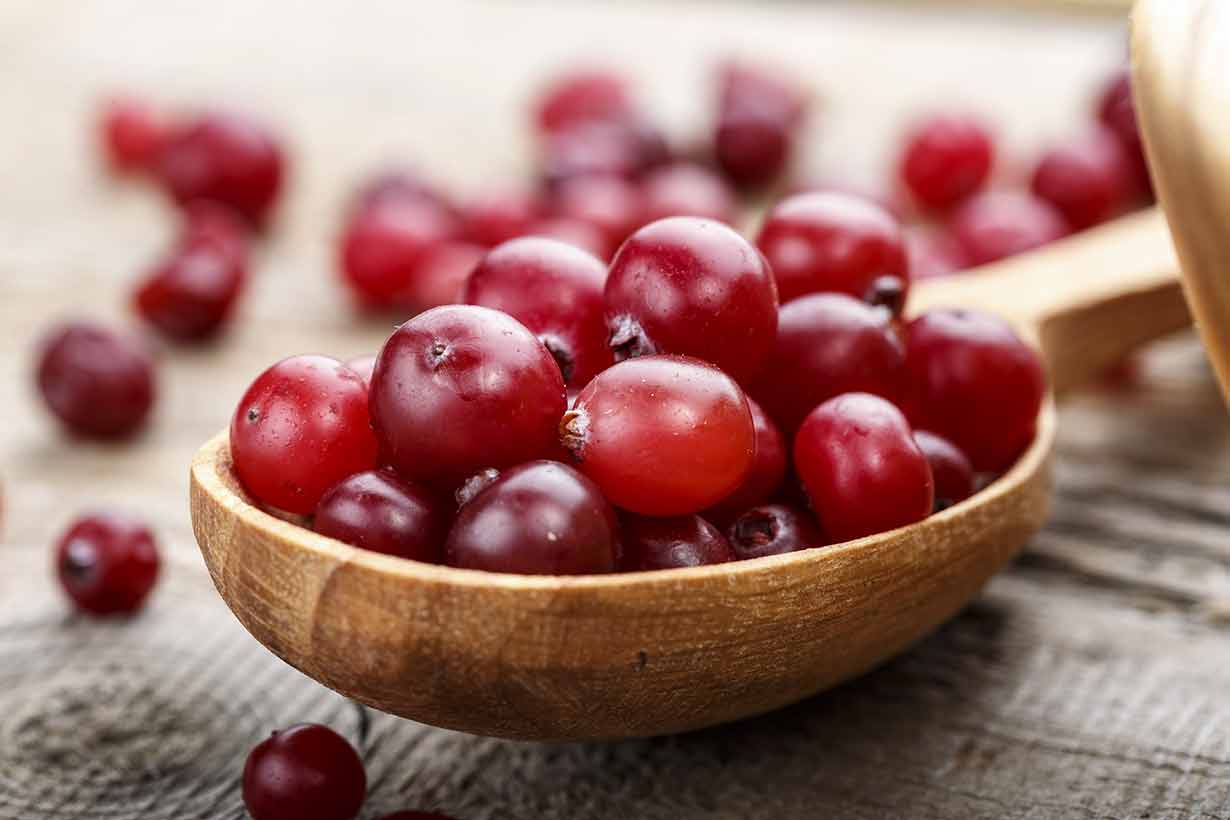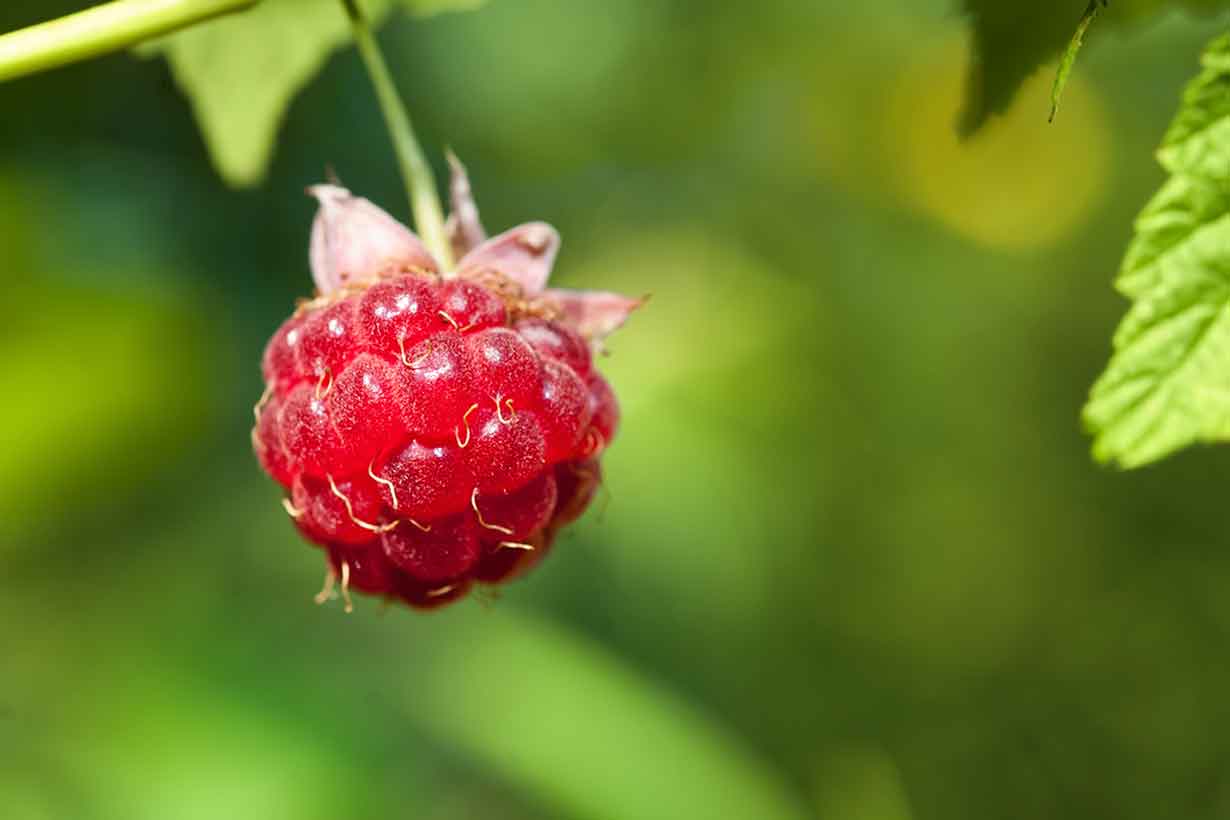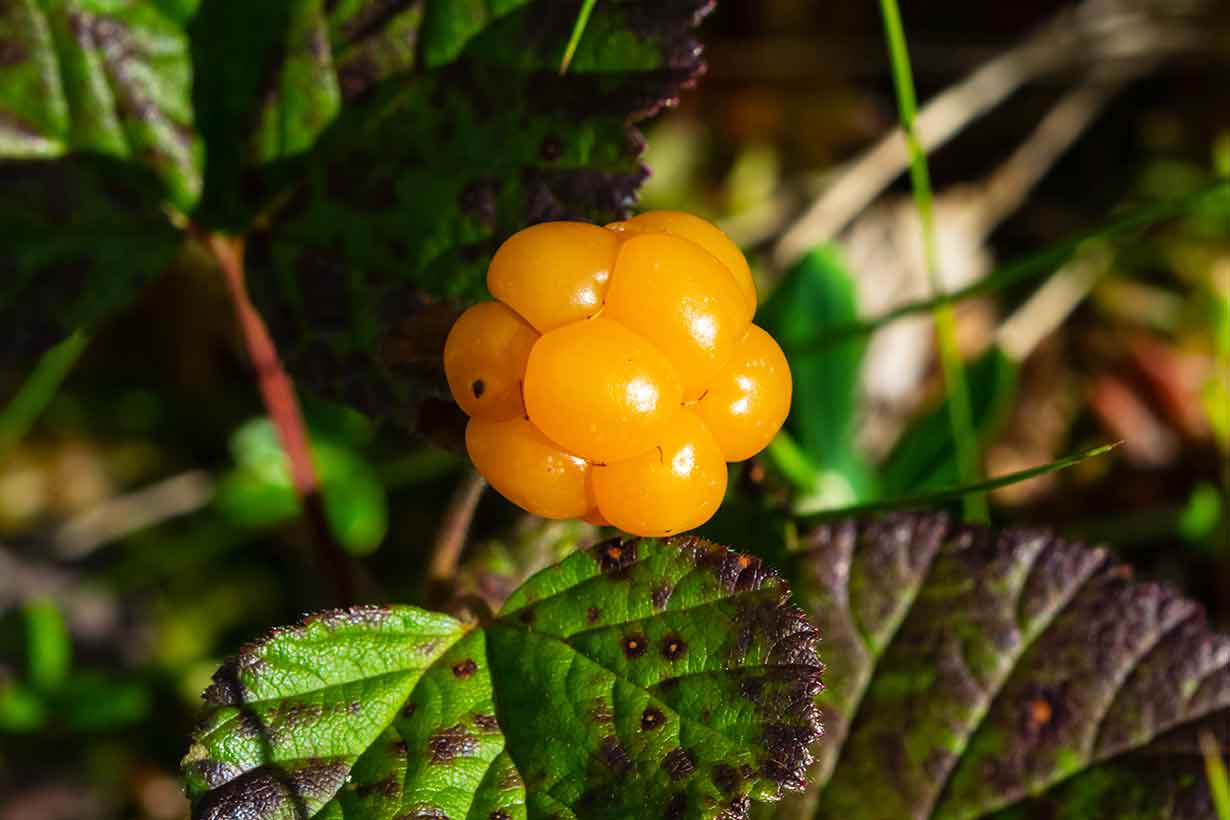Not only do most berries taste great, but they are a food almost universally recognized as healthy.
They are one of the most nutritious types of fruit and tend to provide high levels of fiber, vitamin C, and polyphenols.
This article examines the different types of berries from around the world, their characteristics, nutritional values, what they look like, and how to use them.
Unless otherwise stated, all nutritional data is sourced from the USDA’s FoodData Central Database. All nutritional values have been provided per 100 grams (3.5-ounce) serving to allow for direct comparison between the different berries.
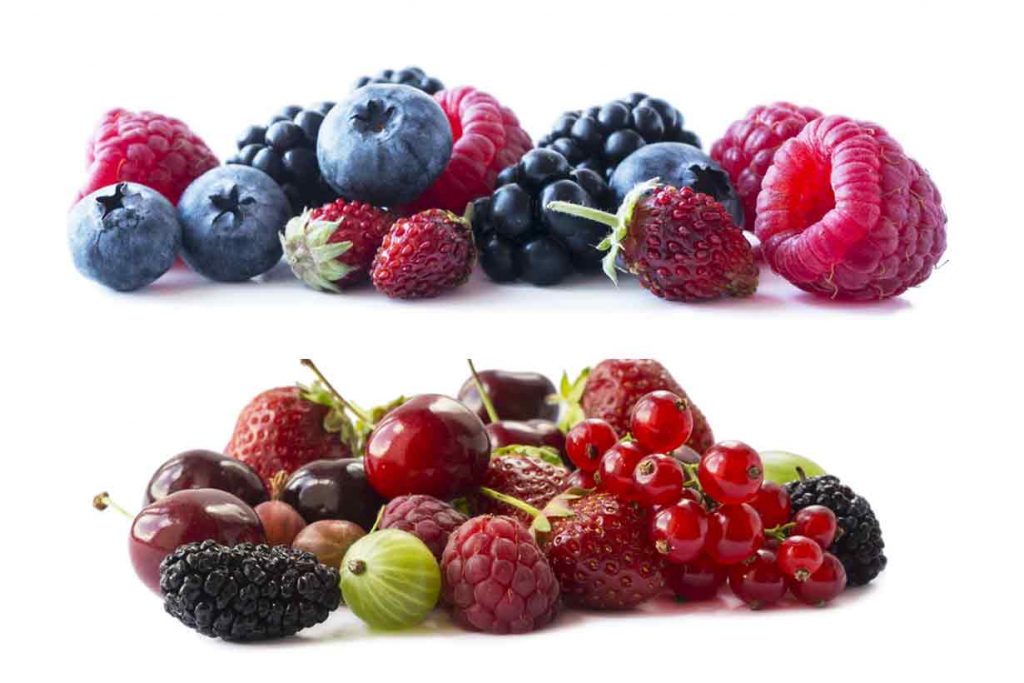
Table of contents
- 1) Acai Berries
- 2) Bilberries
- 3) Blackberries
- 4) Blackcurrants
- 5) Black Raspberries
- 6) Blueberries
- 7) Boysenberries
- 8) Chokeberries (Aronia)
- 9) Cloudberries
- 10) Cranberries
- 11) Elderberries
- 12) Goji Berries (Wolfberry)
- 13) Gooseberries
- 14) Huckleberries
- 15) Juneberries
- 16) Kiwiberries
- 17) Lingonberries
- 18) Loganberries
- 19) Pineberries
- 20) Raspberries
- 21) Redcurrants
- 22) Red Mulberries
- 23) Salmonberries
- 24) Seaberries (Sea Buckthorns)
- 25) Strawberries
- 26) Tayberries
- 27) White Mulberries
- Final Thoughts
1) Acai Berries

Acai berries are native to South American rainforests (1).
Over the last two decades, they have experienced an explosion in global popularity—although some of this has been due to exaggerated ‘superfood’ claims. That said, the berries are nutritious and contain high amounts of polyphenols (2).
Fresh acai berries are inedible in their whole form because the seed accounts for about 80% of the berry (3). For this reason, people usually buy acai berries in powdered form. These acai powder supplements are made with the skin of acai berries; mixing them with water makes a drink.
The nutritional values of these products can significantly vary depending on the ingredients and serving size.
However, these products can be very expensive, and it is probably better to stick with locally available fresh berries.
2) Bilberries
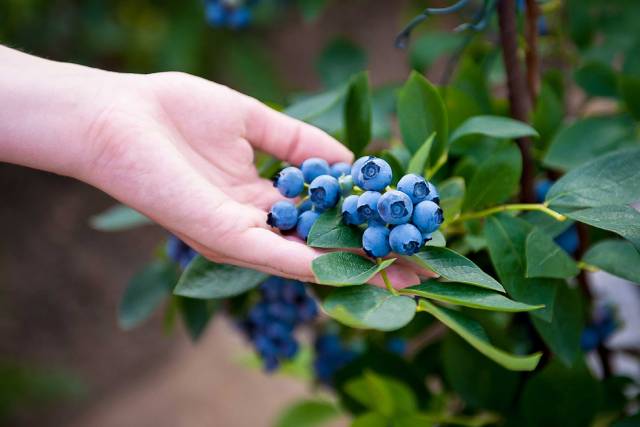
Bilberries share a deep visual resemblance with blueberries. This berry is sometimes even referred to as ‘European blueberry.’
Despite this, bilberries and blueberries are slightly different species of berries (4).
Bilberries also have a more tart taste, possibly due to differences in the phytochemicals they contain (5). That said, they still have some sweetness too and can be eaten in the same way as blueberries—either fresh or as part of a recipe
Nutritionally, bilberries provide the following values per 100-gram (3.5 oz) serving. The USDA does not have a listing for bilberries, but as a close relative of blueberries, they are thought to share similar nutritional characteristics (6):
- Calories: 57 kcal
- Carbohydrates: 14.5 g
- Fiber: 2.4 g
- Sugars: 9.96 g
- Fat: 0.33 g
- Protein: 0.74 g
3) Blackberries
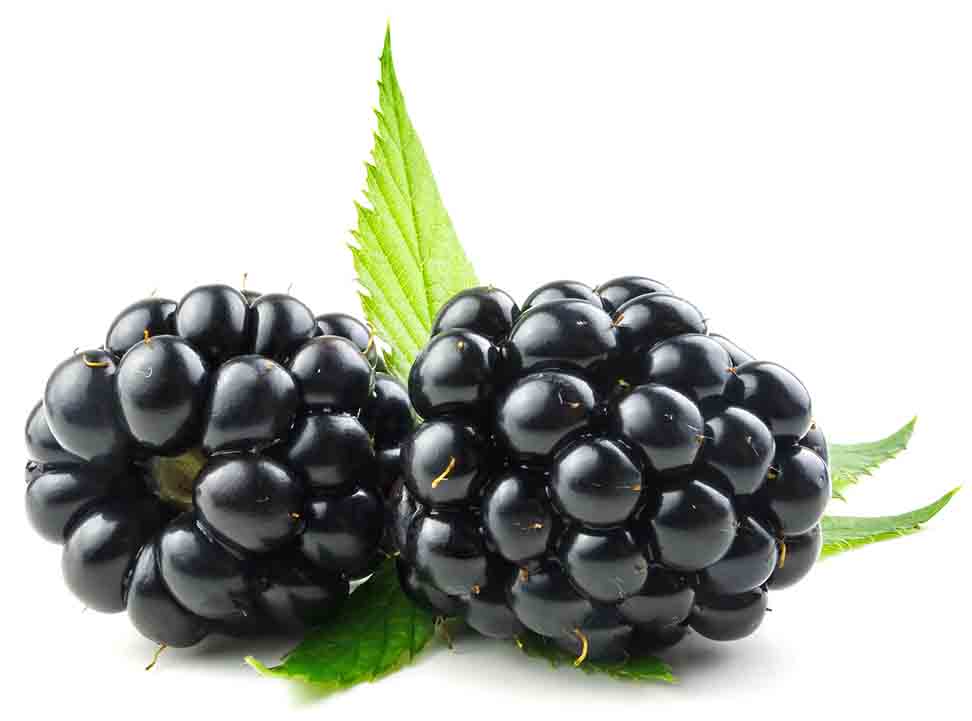
Blackberries grow worldwide, and they look somewhat similar to a large black raspberry.
These berries tend to be very popular, too, as they are arguably among the best-tasting berries.
Here is the basic nutritional profile for blackberries per 100 grams (3.5 oz) serving (7):
- Calories: 43 kcal
- Carbohydrate: 9.61 g
- Fiber: 5.3 g
- Sugars: 4.88 g
- Fat: 0.49 g
- Protein: 1.39 g
Blackberries are also an excellent source of vitamin C and various polyphenols (8).
4) Blackcurrants
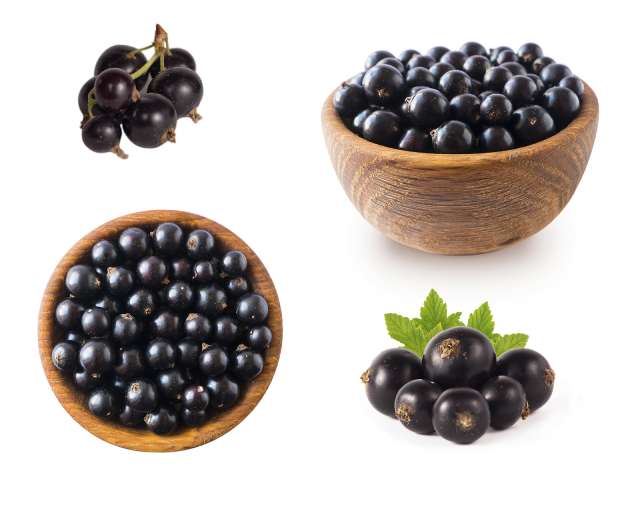
Blackcurrants are native to Northern Europe and Northern Asia (9).
Despite past popularity in the United States, they are now hard to find due to a former half-century-long ban that began in 1911.
This ban was enforced due to a prevailing belief at the time that blackcurrant crops were a threat to the timber industry. Blackcurrants were thought to have been an enabler for the spread of a fungus called white pine blister rust.
Although it is possible to eat blackcurrants raw, they are quite tart, so they are often sweetened and processed. Many blackcurrant products, such as juices, jams, and jellies, are available.
Blackcurrants are highly nutritious, and they contain particularly large amounts of vitamin C. Here is their basic nutritional profile per 100-gram (3.5-ounce) serving (10):
- Calories: 63 kcal
- Carbohydrate: 15.4 g
- Fat: 0.4 g
- Protein: 1.4 g
Learn more about blackcurrants
5) Black Raspberries
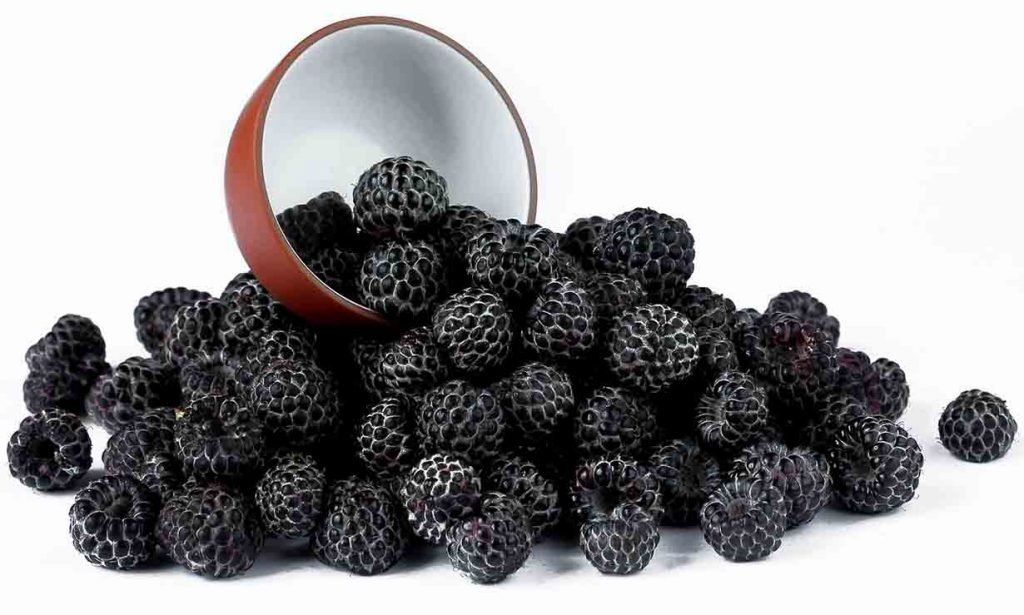
Despite looking slightly similar to blackberries, black raspberries are an altogether different fruit native to North America (11).
A simple way to tell the difference is by looking at the center of the berry. Unlike regular blackberries, black raspberries are hollow in the middle.
Due to the various compounds black raspberries contain, they have a slightly fruitier taste than blackberries. However, they tend to be eaten in the same way: either alone or with a bit of cream.
Based on nutritional data from the NCC Food and Nutrient Database, black raspberries provide the following nutritional profile per 100-gram (3.5 oz) serving (12):
- Calories: 51 kcal
- Carbohydrates: 12.9 g
- Fiber: 6.5 g
- Sugars: 2.67 g
- Fat: 0.19 g
- Protein: 1.01 g
Learn more about black raspberries
6) Blueberries
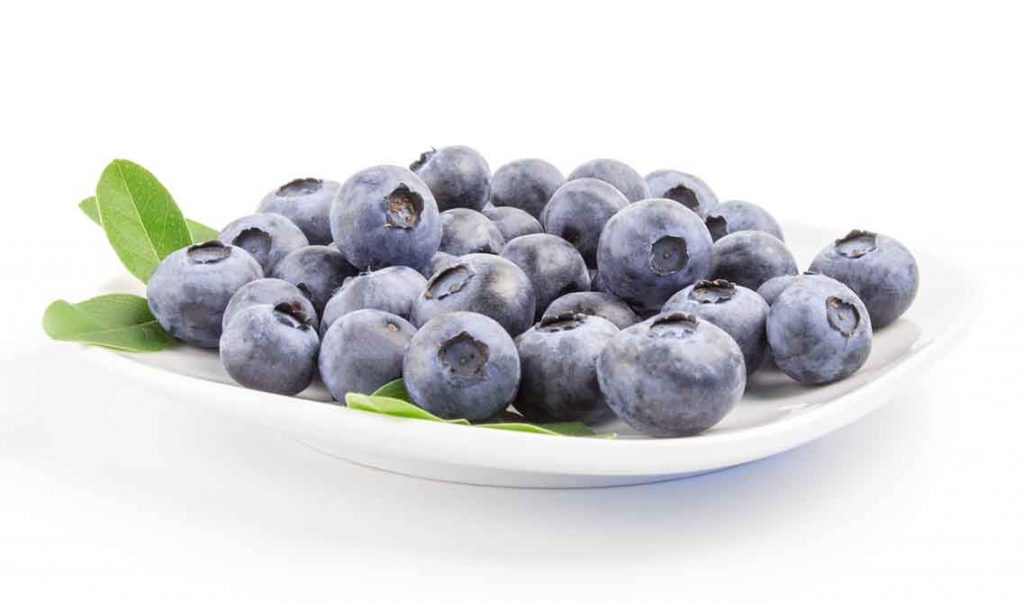
Blueberries are one of the most common types of berries, and it is easy to hear people discussing their purported health benefits.
These popular berries are native to North America, but they are now grown throughout much of the world (13).
Compared to many previously listed berries, blueberries have a higher sugar content, which translates to a slightly sweeter taste.
One interesting thing worth noting is that fresh blueberries can be extremely expensive compared to frozen. However, studies show no significant nutritional differences between the two, and frozen blueberries are just as good as fresh (14, 15).
Per 100-gram (3.5 oz) serving, here is the basic nutritional profile for blueberries (16):
- Calories: 57 kcal
- Carbohydrate: 14.5 g
- Fiber: 2.4 g
- Sugars: 9.96 g
- Fat: 0.33 g
- Protein: 0.74 g
Learn more about wild blueberries
7) Boysenberries
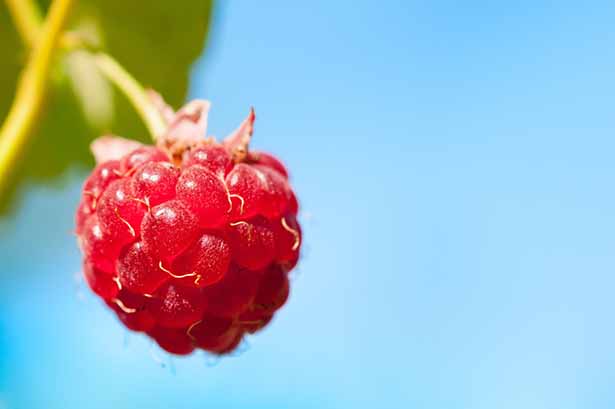
Boysenberries are one of the lesser-known berries, but they have a pleasant, fruity taste.
As shown in the picture above, boysenberries are similar in appearance to raspberries and blackberries. Although the berry in the image is red, their color can range from bright red to black.
In line with their mixed look, boysenberries taste like a mix of blackberry and raspberry, and they have a juicy and enjoyable flavor.
Boysenberries are thought to be a hybrid cross between raspberries, blackberries, and loganberries (17).
Here are the basic nutritional values for boysenberries per 100-gram (3.5 oz) serving, based on frozen weight (18):
- Calories: 43 kcal
- Carbohydrate: 9.6 g
- Fiber: 5.3 g
- Sugars: 4.9 g
- Fat: 0.5 g
- Protein: 1.4 g
Learn more about boysenberries
8) Chokeberries (Aronia)
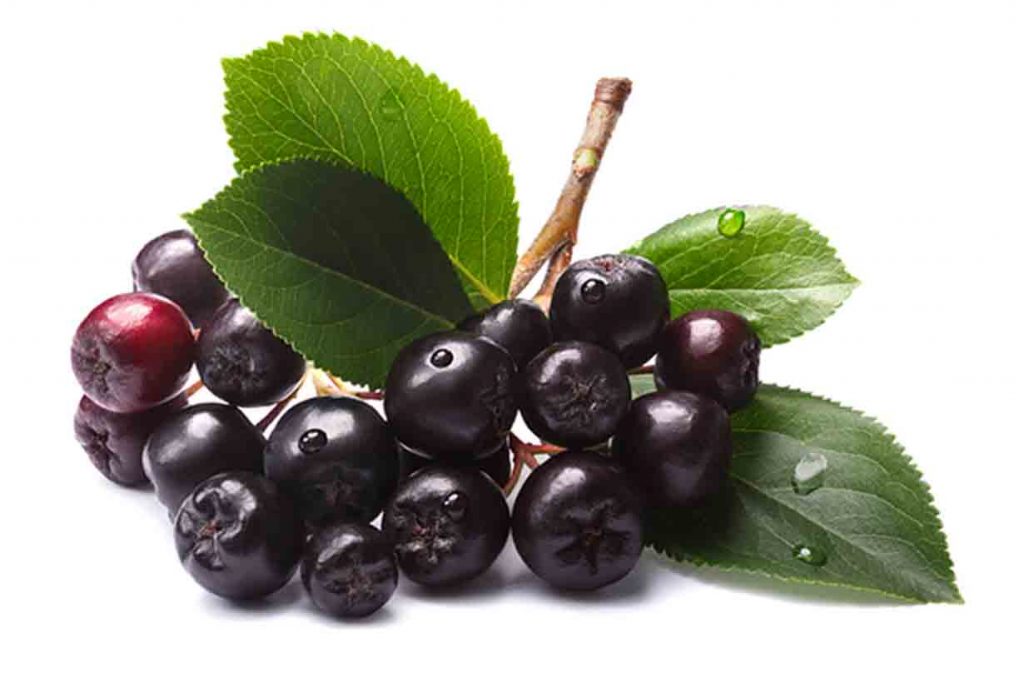
Chokeberries (also known as ‘Aronia’) are native to North America, and they have a unique but astringent taste (19).
There are two different types of chokeberries: red and black. The black ones are quite prevalent, but red chokeberries are harder to find.
While chokeberries look a little bit like blackcurrants, they taste nothing alike.
On the negative side, chokeberries are one of the most bitter-tasting berries. In this regard, they can sometimes cause a ‘dry-mouth’ feeling due to their high tannin content (20).
Although chokeberries can be eaten raw, they are not particularly enjoyable to eat in this way. For this reason, they are often used to make products like jams, juices, and jellies.
It is also possible to find powdered aronia supplements, which are a rich source of polyphenols (21). However, exaggerated health claims are sometimes used in the marketing of such products.
Based on data from the NCC Food and Nutrient database, here are the basic nutritional values for 100 grams (3.5 oz) of chokeberries (22):
- Calories: 45 kcal
- Carbohydrate: 9.0 g
- Fiber: 5.0 g
- Sugars: 4.0 g
- Fat: 1.0 g
- Protein: 1.0 g
9) Cloudberries
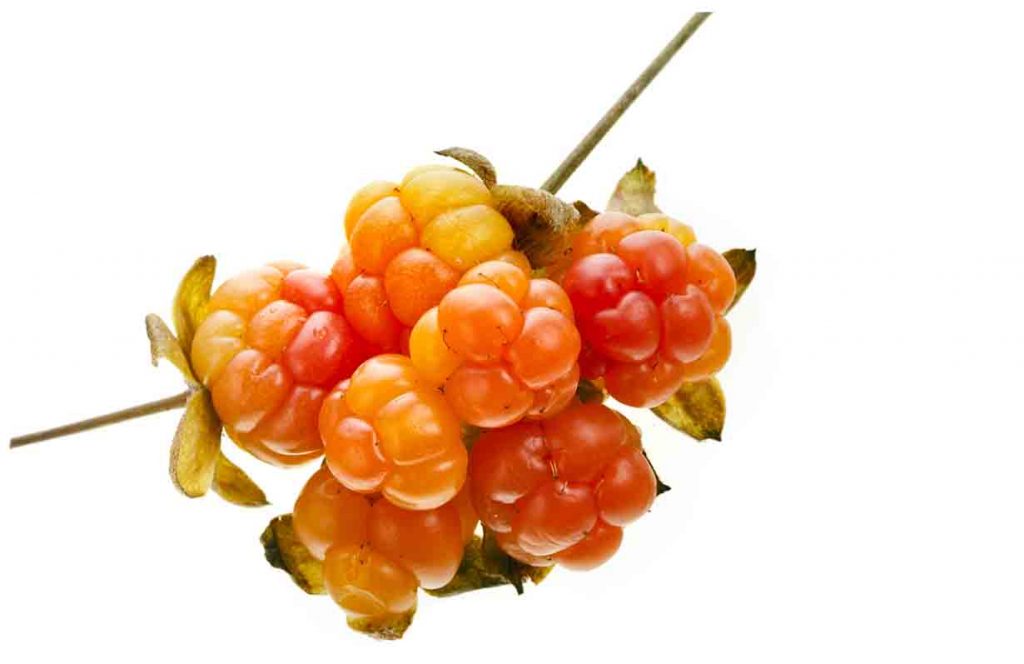
Cloudberries are an attractive amber-orange colored fruit shaped like a cloud, hence their unique name. These berries typically grow in parts of Northern Europe, North America, and Russia (23).
These berries have a deliciously sweet and sour taste, although some people may find them slightly on the tart side.
The sweetness increases as cloudberries ripen, but like many berries, they are often sweetened and used to make jams, jellies, and even liquors.
Perhaps the worst thing about cloudberries is just how difficult it can be to find them. Cloudberries only grow in certain areas that offer specific growing conditions, and it is tough to buy them elsewhere—though some specialist shops may sell the berries frozen.
Nutritionally, cloudberries offer more than 100% of the daily value for vitamin C per 100 grams. They also offer the following basic nutritional values (24):
- Calories: 51 kcal
- Carbohydrate: 8.6 g
- Fat: 0.8 g
- Protein: 2.4 g
10) Cranberries
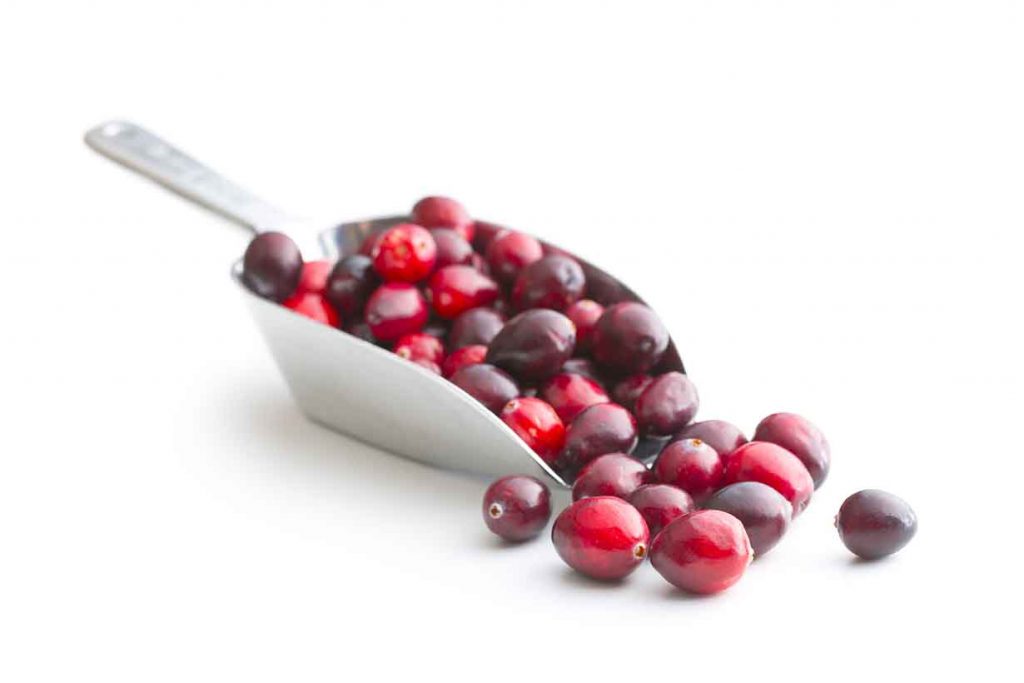
Cranberries are among the most well-known berries.
From cranberry juices to dried berries, alcohol, and jams, they are used to make a wide range of different products.
The berries grow natively in North America throughout Canada and the United States (25).
One clear taste characteristic of cranberries is that they are naturally quite sour. As a result, many cranberry products are sweetened and can sometimes contain high amounts of sugar.
Per 100-gram (3.5 oz) serving, cranberries supply (26):
- Calories: 46 kcal
- Carbohydrate: 12.0 g
- Fiber: 3.6 g
- Sugars: 4.27 g
- Fat: 0.13 g
- Protein: 0.46 g
11) Elderberries
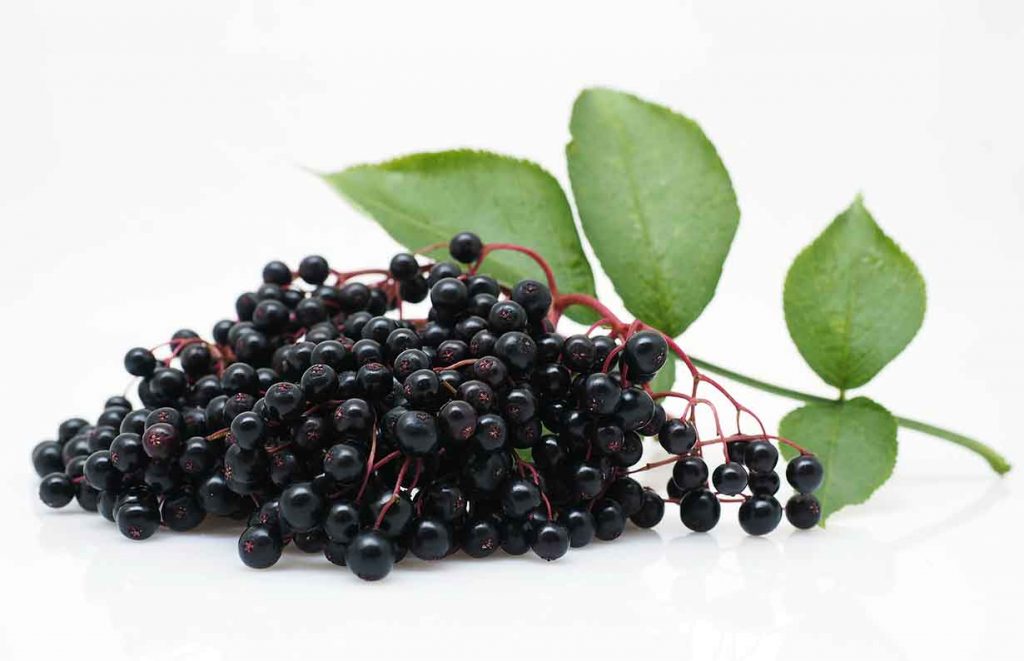
Elderberries are tiny berries that people often use to make tea, and they have been grown around the world for centuries (27).
Generally speaking, most elderberries have a tart and bitter taste, so people prefer not to eat them raw. This may be a good thing since they also contain toxic compounds, which can only be removed by cooking them thoroughly.
For these reasons, the berries are typically processed into sweetened elderberry products, such as elderberry tea and jam.
Like many other dark purple fruits, elderberries contain high levels of flavonoids called anthocyanins, which have purported health benefits (28).
Nutritionally, these little berries provide the following values per 100-gram (3.5 oz) serving (29):
- Calories: 73 kcal
- Carbohydrate: 18.4 g
- Fiber: 7 g
- Fat: 0.5 g
- Protein: 0.7 g
Elderberries are a rich source of vitamin C and dietary fiber.
12) Goji Berries (Wolfberry)
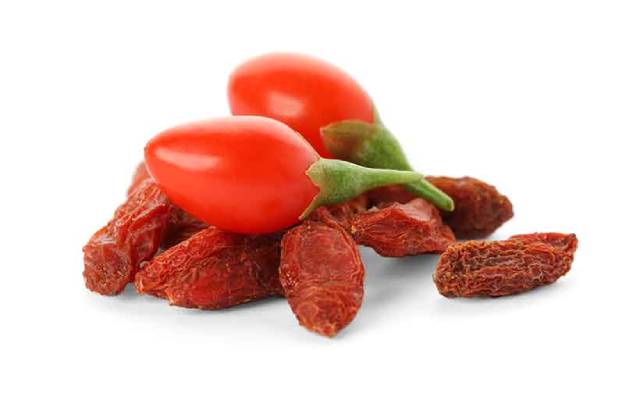
Growing in prominence over the last decade or so, goji berries are now available almost everywhere, usually as a dried berry.
Also known as ‘wolfberry,’ goji berries are native to East Asia and are traditionally made into tea infusions in China and Korea (30).
Goji berries are a rich source of nutrients, and they provide a good source of vitamin A carotenoids, copper, selenium, riboflavin, and iron (31)
The berries have an enjoyable taste: chewy, flavorful, tough but soft inside… a little sweet and slightly bitter. In other words, goji berries offer a lot of different flavors.
Due to the difficulty in sourcing fresh goji berries, they are usually sold in their dried form.
Dried goji berries provide the following basic nutritional profile per 100-gram (3.5 oz) serving (31):
- Calories: 349 kcal
- Carbohydrate: 77.1 g
- Fiber: 13.0 g
- Sugars: 45.6 g
- Fat: 0.39 g
- Protein: 14.3 g
13) Gooseberries
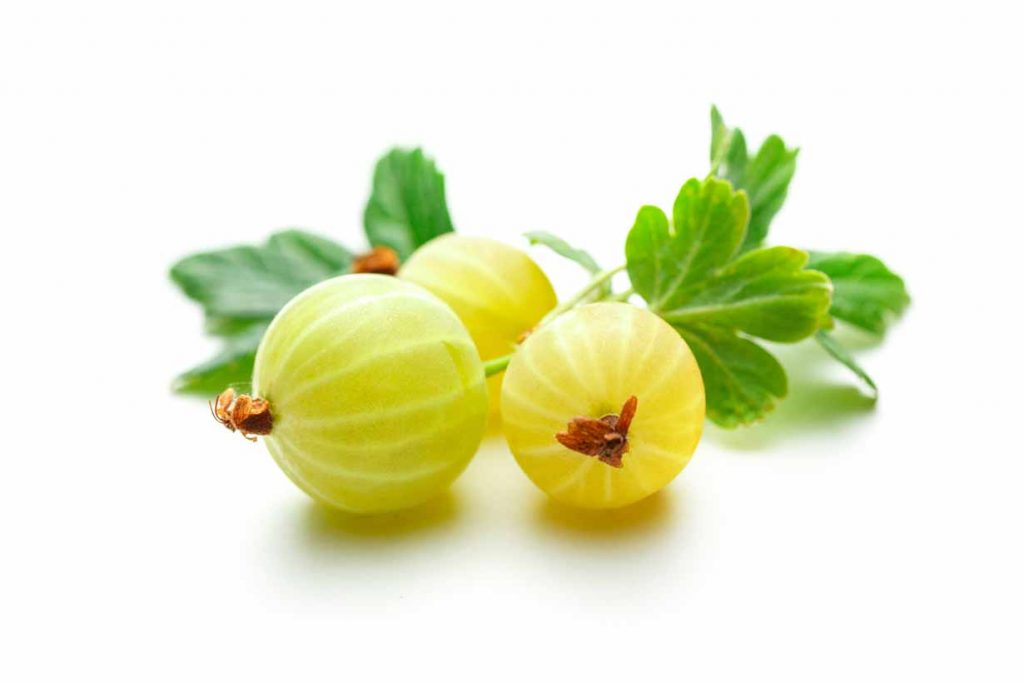
Gooseberries are sour, tart berries with slight notes of sweetness that grow around the world.
The berries are native to Eastern Europe and North Africa (European Gooseberry) and the North of the United States and Canada (American gooseberry) (32).
Not only is it possible to find fresh gooseberries, but frozen, canned, and dried gooseberries, as well as a wide range of gooseberry jams, are available.
Per 100-gram (3.5 oz) serving, here are the basic nutritional values for gooseberries (33):
- Calories: 44 kcal
- Carbohydrate: 10.2 g
- Fiber: 4.3 g
- Fat: 0.58 g
- Protein: 0.88 g
Gooseberries also offer significant amounts of vitamin C.
14) Huckleberries
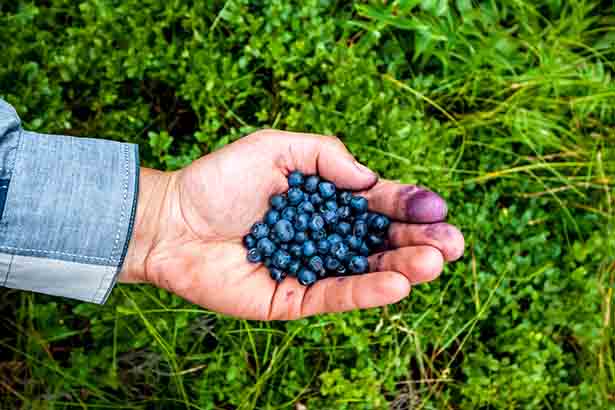
If you’ve ever seen huckleberries, you’ll note how similar to blueberries they look. While the two share visual similarities, they are an entirely different fruit with several key differences.
Specifically, the taste is slightly different—blueberries have a sweeter taste while huckleberries offer a slightly more tart flavor. We can see this difference in their nutritional profile, with huckleberries having a significantly smaller carbohydrate content.
While blueberries are usually commercially cultivated, cultivation of huckleberries is rare, and they are mainly found in the wild. Huckleberries are native to the Americas (34).
Per 100-gram (3.5 oz) serving, huckleberries provide (35):
- Calories: 37 kcal
- Carbohydrate: 8.7 g
- Fat: 0.1 g
- Protein: 0.4 g
15) Juneberries
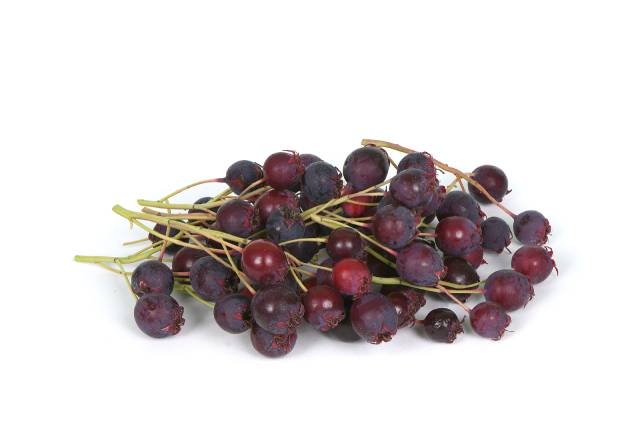
Juneberries are reddish-purple-colored berries that grow on Amelanchier trees—large trees covered in white flowers (36).
These trees are native to North America, but they can now be found around the world.
As for the berries, they have a mild and pleasantly sweet taste, but it is challenging to find them at retail stores.
For this reason, most people who consume juneberries forage for them. There is an interesting guide on how to do that here. Note: never pick and eat berries unless you are 100% sure that you have correctly identified them.
Juneberries are similar to blueberries nutritionally, and they also contain a similar group of flavonoid polyphenols (37, 38).
16) Kiwiberries
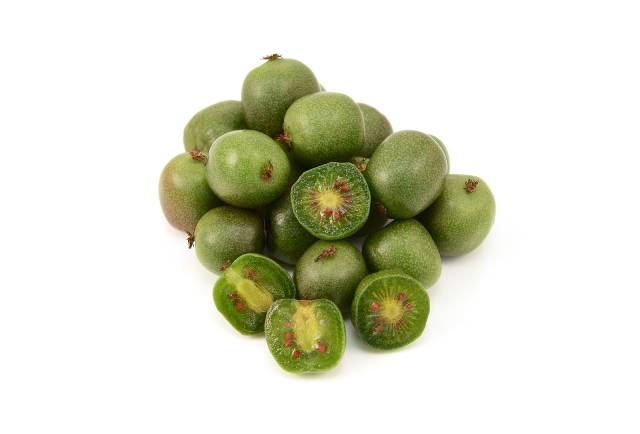
As you can probably guess from the picture, kiwi berries are named due to their resemblance to kiwi fruit. They taste the same as kiwi fruit, and you eat the whole berry, including the skin.
The only real difference is that kiwi berries are smaller—they have an approximate size of a cherry tomato.
Basically, kiwiberries are to kiwi fruit what cherry tomatoes are to tomatoes or what kumquats are to oranges.
Kiwi berries are native to East Asia, and they grow in forests within China, Eastern Russia, Japan, and Korea. However, they are now cultivated around the world (39, 40).
On the nutritional side, kiwi berries are among the richest dietary sources of vitamin C. Research shows that some kiwi berry samples provide up to 430 mg of vitamin C per 100 grams, which is more than 450% of the daily value (41, 42).
According to an official website for kiwi berry growers, the berries provide the following nutritional values per 100-gram (3.5 oz) serving (43):
- Calories: 96 kcal
- Carbohydrate: 22.0 g
- Fiber: 4.0 g
- Sugars: 9.5 g
- Fat: 0.7 g
- Protein: 1.5 g
17) Lingonberries

Lingonberries are another highly touted berry full of flavonoid polyphenols, and a range of commercial powders and drinks have sprung up around them (44).
Although lingonberry supplements may contain a good amount of polyphenols, so do most fresh berries—for a considerably cheaper price.
Lingonberries are slightly tart, so they are often sweetened and used in jam, juice, and syrup recipes.
Based on data from the NCC database, here are the nutritional values of lingonberries per 100-gram (3.5 oz) serving (45):
- Calories: 55 kcal
- Carbohydrate: 12.2 g
- Fiber: 2.6 g
- Sugars: 4.4 g
- Fat: 0.5 g
- Protein: 0.4 g
18) Loganberries
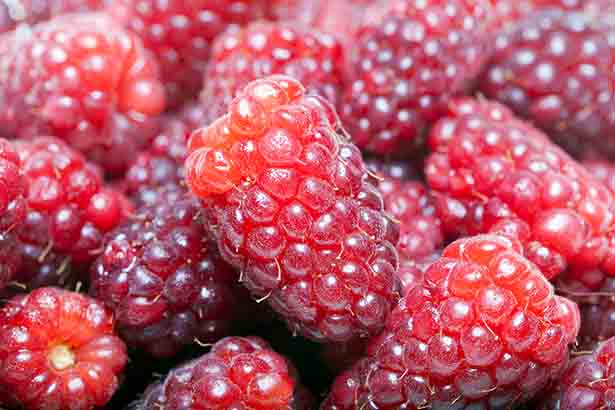
While sounding quite similar to lingonberry, the loganberry is an altogether different fruit that somewhat resembles mulberries in appearance.
Interestingly, the loganberry is a hybrid cross between a raspberry and a blackberry, but it measures slightly longer in length. The taste is also somewhere between the two.
Apparently, loganberries were accidentally created by a Californian horticulturist in the late 19th century (46).
Loganberries can be eaten fresh or used in a variety of recipes and condiments.
Like other types of berries, loganberries are high in vitamin C and provide a rich source of potentially beneficial flavonoids (47).
Per 100-gram (3.5 oz) serving, here are the basic nutritional values for loganberries, based on their frozen weight (48):
- Calories: 55 kcal
- Carbohydrate: 13.0 g
- Fiber: 5.3 g
- Sugars: 7.7 g
- Fat: 0.31 g
- Protein: 1.52 g
19) Pineberries
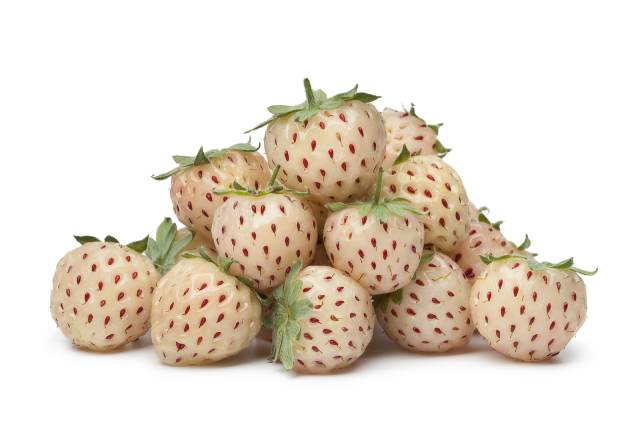
Pineberries have an unusual appearance, and they somewhat look like the reverse of a strawberry. For example, they are mainly white with little red seeds on them, and they even have the green leaf on top like regular strawberries.
The reason for this: pineberries are a white strawberry cultivar, which is another name by which they’re known—white strawberry (49).
Interestingly, pineberries have been grown for centuries in South America, apparently in places where red strawberries weren’t even known about. However, they have only recently arrived in European and North American markets (50).
Many people feel that pineberries have a pineapple-like flavor (51).
The nutritional values of pineberries closely resemble red strawberries.
20) Raspberries
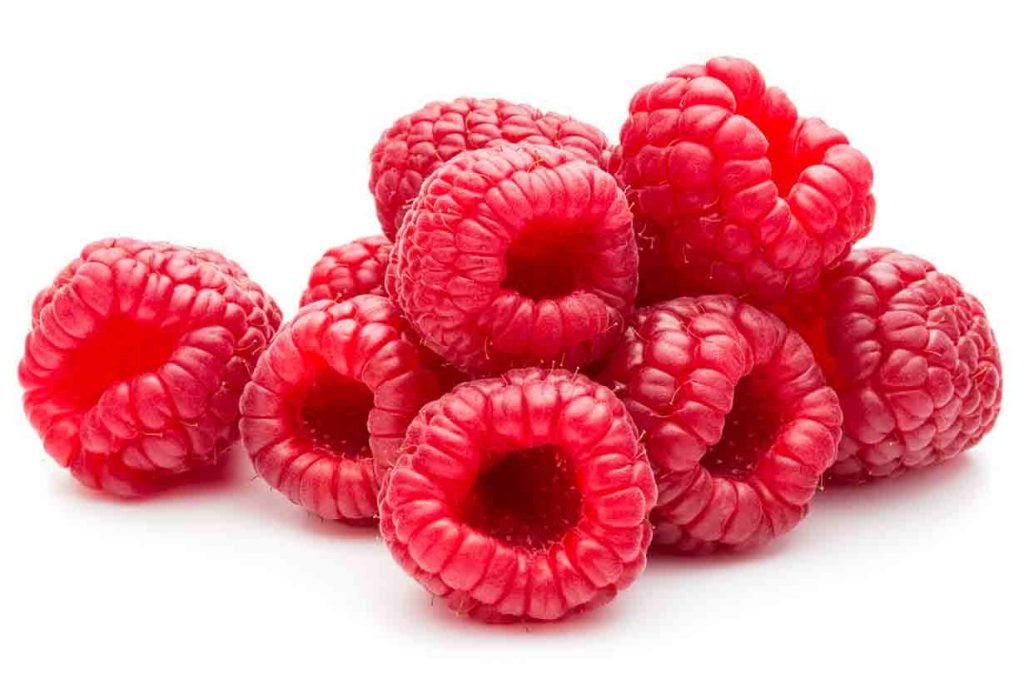
As one of the most common berry varieties, raspberries are a popular fruit around the world.
One reason for their popularity is their sweet taste, which is usually accompanied by a slight tartness, depending on the raspberry’s ripeness.
Raspberries are an excellent source of vitamin C and they’re one of the highest-fiber fruits.
Here is the basic nutritional profile for raspberries per 100-gram (3.5 oz) serving (52):
- Calories: 52 kcal
- Carbohydrate: 11.9 g
- Fiber: 6.5 g
- Sugars: 4.4 g
- Fat: 0.65 g
- Protein: 1.2 g
21) Redcurrants
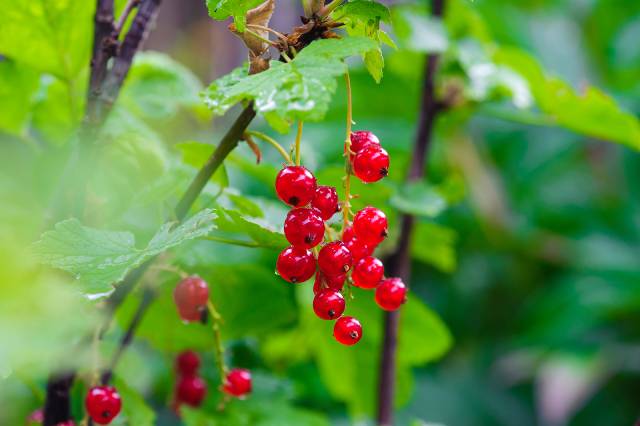
Redcurrants are bright, red-colored berries that are native to Europe. The berry is thought to have originated in Belgium and then spread through the wild across Europe and Asia (53, 54).
Redcurrants are tart with a slight sweetness. Although they can be eaten alone, they are often used in a range of sweet and savoury recipes.
Redcurrants are a significant source of vitamin C and anthocyanin polyphenols (55).
According to the United Kingdom’s Composition of Foods Integrated Dataset (CoFID), redcurrants offer the following nutritional values per 100-gram (3.5 oz) serving (56):
- Calories: 21 kcal
- Carbohydrate: 4.4 g
- Sugars: 4.4 g
- Fat: 0 g
- Protein: 1.1 g
22) Red Mulberries
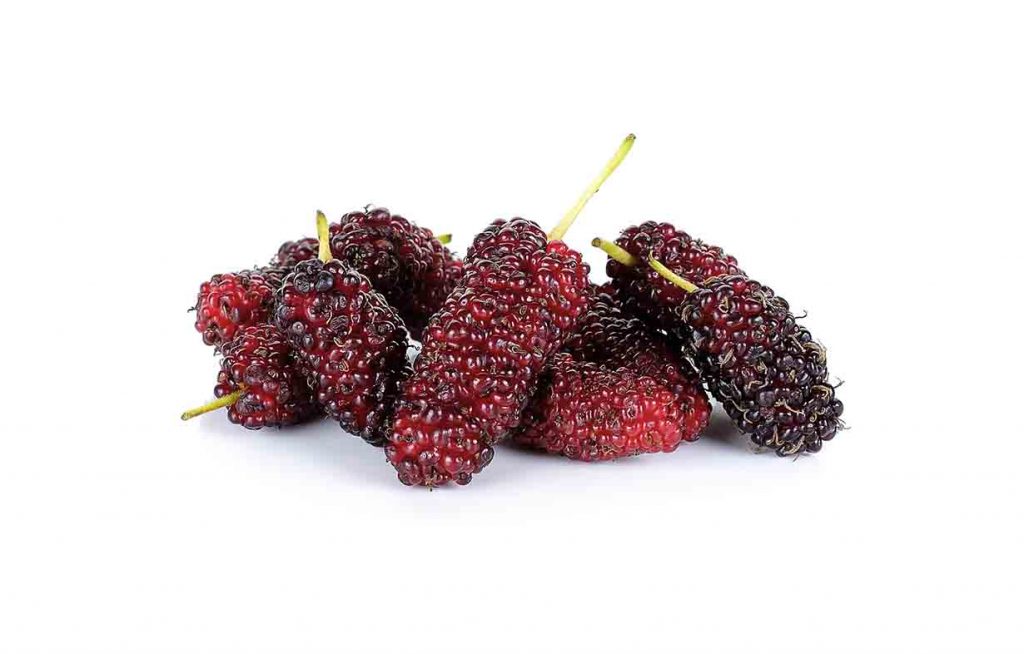
First, the two most common varieties of mulberry are red and white. As can be seen in the picture, the red kind looks slightly similar to a raspberry but is much longer.
However, red mulberries are unfortunately quite rare, so they can be difficult to find.
Mulberries are often regarded as one of the tastiest berries, and they are native to North America and Asia (57).
Nutritionally, a 100-gram (3.5 oz) serving of fresh mulberries provides (58):
- Calories: 43 kcal
- Carbohydrate: 9.8 g
- Fiber: 1.7 g
- Sugars: 8.1 g
- Fat: 0.39 g
- Protein: 1.44 g
23) Salmonberries
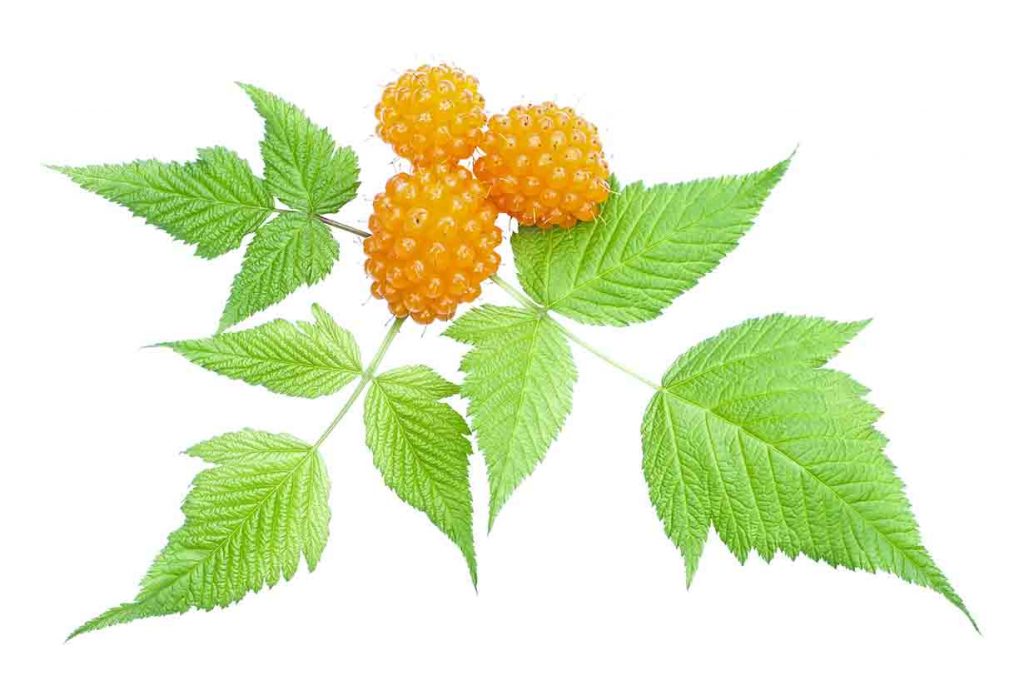
Salmonberries are among the most interesting types of berries, with their unique, impressive salmon-like color.
Salmonberries have an interesting flavor characterized by a slightly sweet, slightly sour taste, and they are very juicy. The berries are native to Northern America, but they can be found throughout Northwestern Europe (59).
It can be difficult to find salmonberries in stores, but many people enjoy picking their own.
Don’t know where to start? This excellent guide to foraging for salmonberries might help. As always, be safe and only pick berries that you can correctly identify with 100% confidence. Otherwise, leave them on the bush.
Regarding their nutritional benefits, salmonberries are an excellent source of manganese and vitamins A, C, and K. Studies also suggest that wild salmonberries are an exceptional source of polyphenols (60).
Per 100-gram (3.5 oz) serving, salmonberries provide (61):
- Calories: 47 kcal
- Carbohydrate: 10 g
- Fiber: 1.9 g
- Sugars: 3.6 g
- Fat: 0.33 g
- Protein: 0.85 g
24) Seaberries (Sea Buckthorns)
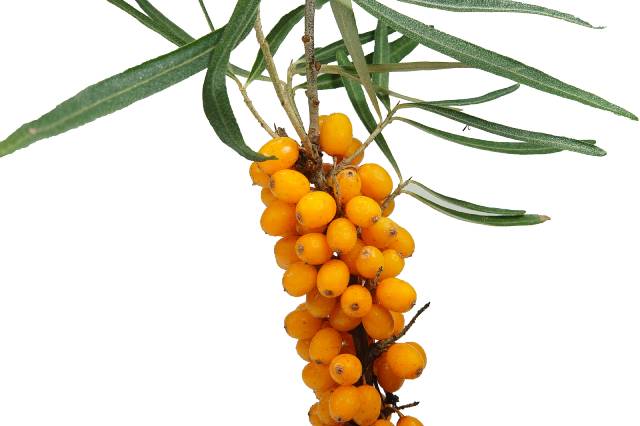
Seaberries are otherwise known as Sea Buckthorn, and they are brightly-colored yellow to orange berries.
We can find these berries throughout the world, from Western Europe and North America to Russia and China (62).
Seaberries are also tasty, and they have a juicy, sweet, and slightly sour taste. The berries can be consumed alone, and it is popular to use them for making jams and juices.
The berries are also packed with vitamin C. For instance, they can contain as much as 400 mg of vitamin C per 100 grams, equal to more than 400% of the daily value (63).
Unlike most berries, sea buckthorn provides moderate amounts of fat and carbohydrates—the fatty acids in the berries can be used to make sea buckthorn oil supplements (64).
According to the CRDB nutritional database, here are the basic nutritional values for seaberries per 100-gram (3.5 oz) serving (65):
- Calories: 90 kcal
- Carbohydrate: 12.3 g
- Fiber: 6.0 g
- Sugars: 6.3 g
- Fat: 5.0 g
- Protein: 0.7 g
25) Strawberries
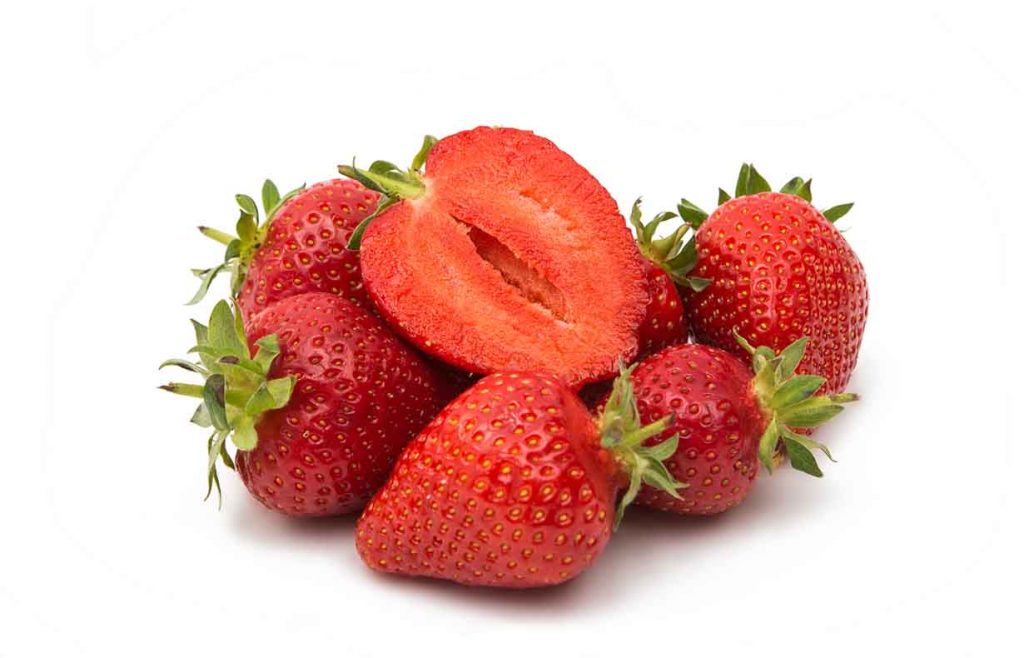
As one of the most popular berries globally, not much needs to be said about strawberries.
Strawberries are among the tastiest and sweetest-tasting berry options. Fresh strawberries are available almost everywhere, but frozen strawberries are also a great—and generally more affordable—option.
Although different strawberries grow worldwide, the common garden strawberry that most of us know was accidentally created as a hybrid in Brittany, France, in 1750 (66).
The basic nutritional values for strawberries per 100 grams (3.5oz) are as follows (67):
- Calories: 32 kcal
- Carbohydrate: 7.68 g
- Fiber: 2.0 g
- Sugars: 4.89 g
- Fat: 0.3 g
- Protein: 0.67 g
26) Tayberries
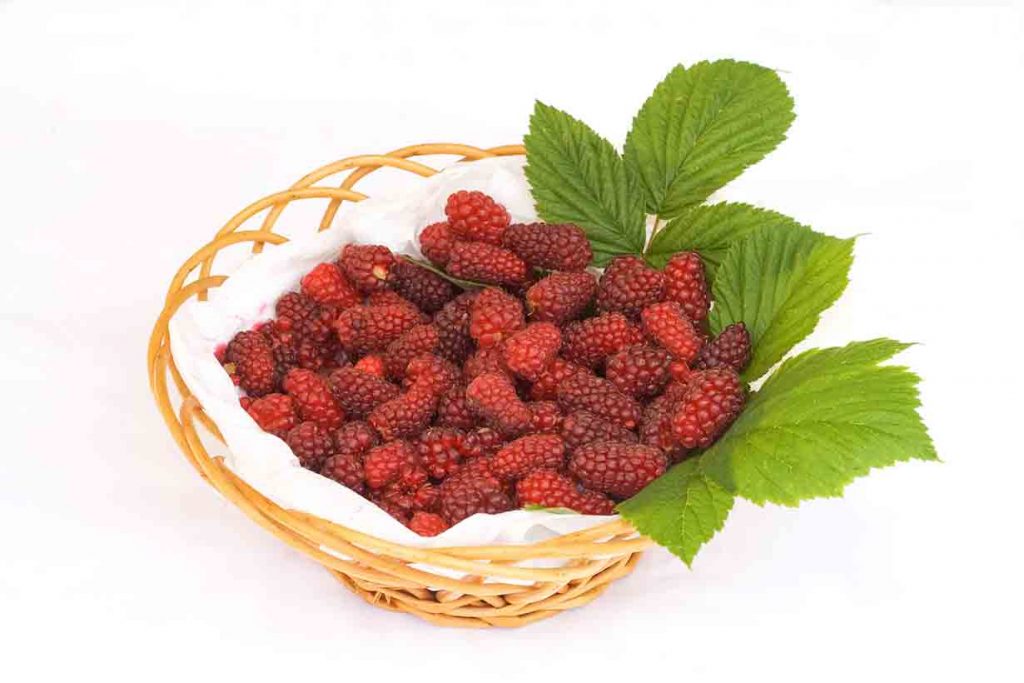
The tayberry is a relatively new berry variety, having originated in Scotland during the late 20th century. Tayberries are a species of berry closely related to raspberries. In fact, they are a cross between raspberries and blackberries (68).
Does that make them the same as loganberries? Although they have many similarities, the major difference between loganberries and tayberries is the size and sweetness.
Originally loganberries were an unintentional cross-breed, whereas tayberries have been cultivated specifically for size and high sweetness levels (69).
Unfortunately, nutritional values for tayberries have yet to be published in a reliable nutrition database.
27) White Mulberries
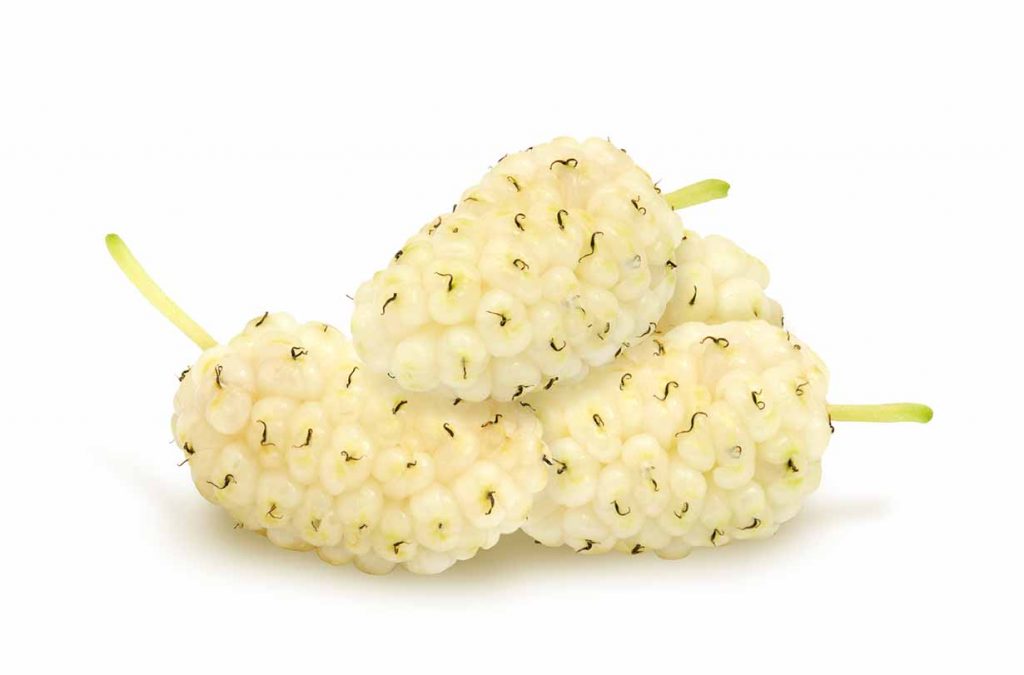
Unlike the red mulberry, which is native to the United States, the white mulberry is a Chinese native berry. However, it is now widespread in America and appears to be slowly displacing the native red mulberry (70, 71).
White mulberries are available to buy as dried berries, which are considerably sweeter than red mulberries. They are also significantly more calorie-dense per gram due to their lower water content.
White mulberries are high in vitamin C and flavonoids and have a good overall nutritional profile (72).
Here is the typical nutritional profile for dried white mulberries per 100-grams (3.5 oz) (73):
- Calories: 300 kcal
- Carbohydrate: 67.5 g
- Fiber: 12.5 g
- Sugars: 55.0 g
- Fat: 2.5 g
- Protein: 10.0 g
Final Thoughts
Overall, all berries are an excellent and healthy dietary choice. They are nutrient-dense and usually quite enjoyable to eat.
So, which berry is the best option?
The answer to that question is simple—since all berries offer nutritional benefits, it’s the one that you enjoy the most.

